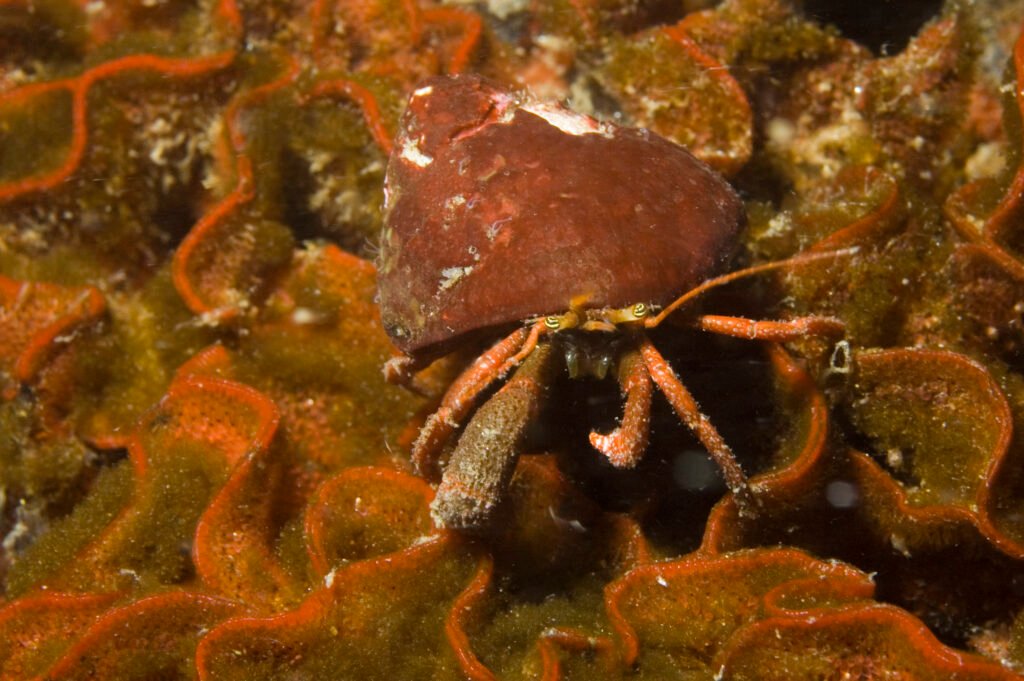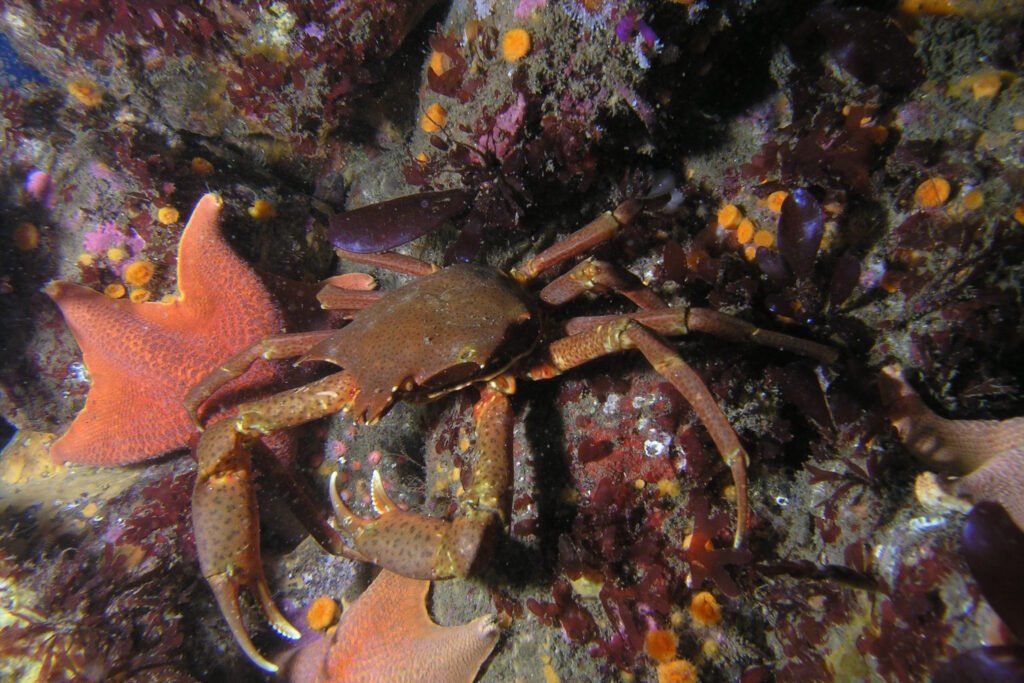Physical Description
The Helmet Crab, Cryptolithodes sitchensis, has a carapace that can reach up to 8 cm across, expanded to cover its legs and claws. The width of its rostrum expands from the base to the tip. It exhibits bright red, orange, or white coloration with spots of various colors.
Habitat and Geographical Range
Common along the eastern Pacific coast, Helmet Crabs are typically found on rocky substrates or sand near rocks. They inhabit intertidal and subtidal zones, preferring areas with ample hiding spots and suitable camouflage.
What They Eat and How They Breed
Helmet Crabs are omnivores, feeding on a variety of prey including algae, small invertebrates, and detritus. They reproduce sexually, with females carrying fertilized eggs until hatching into planktonic larvae.
Physical Threat to Humans
Helmet Crabs do not pose a physical threat to humans. However, they may use their claws for defense if handled, so it’s advisable to avoid provoking them.








